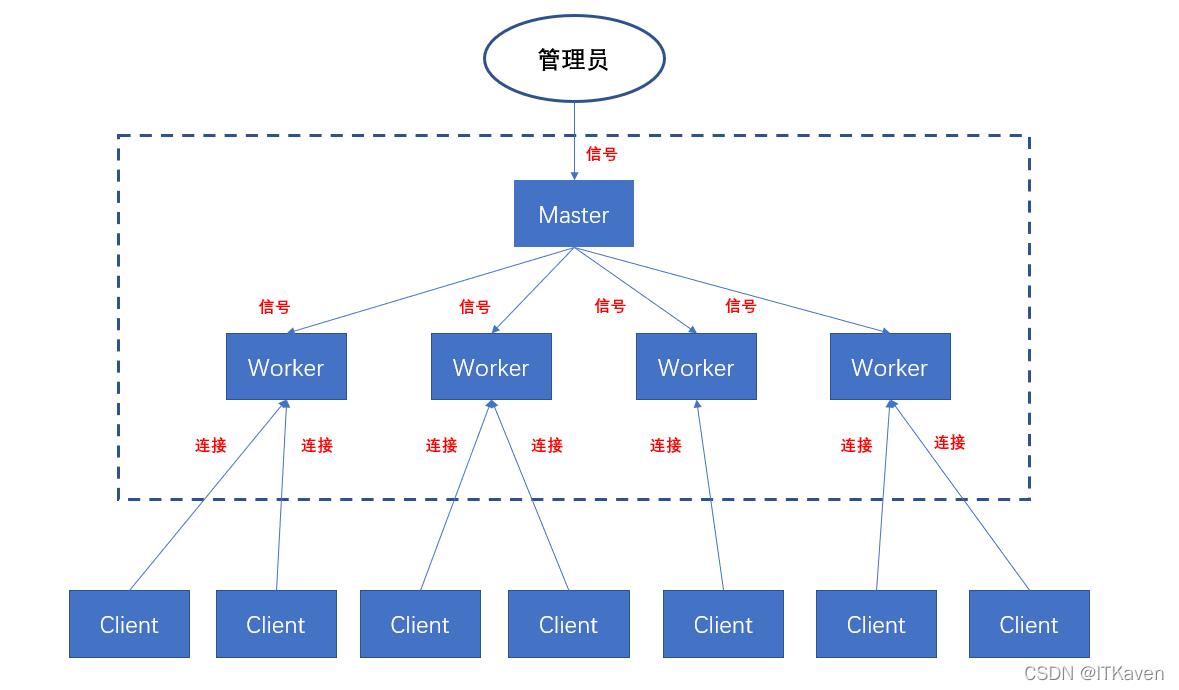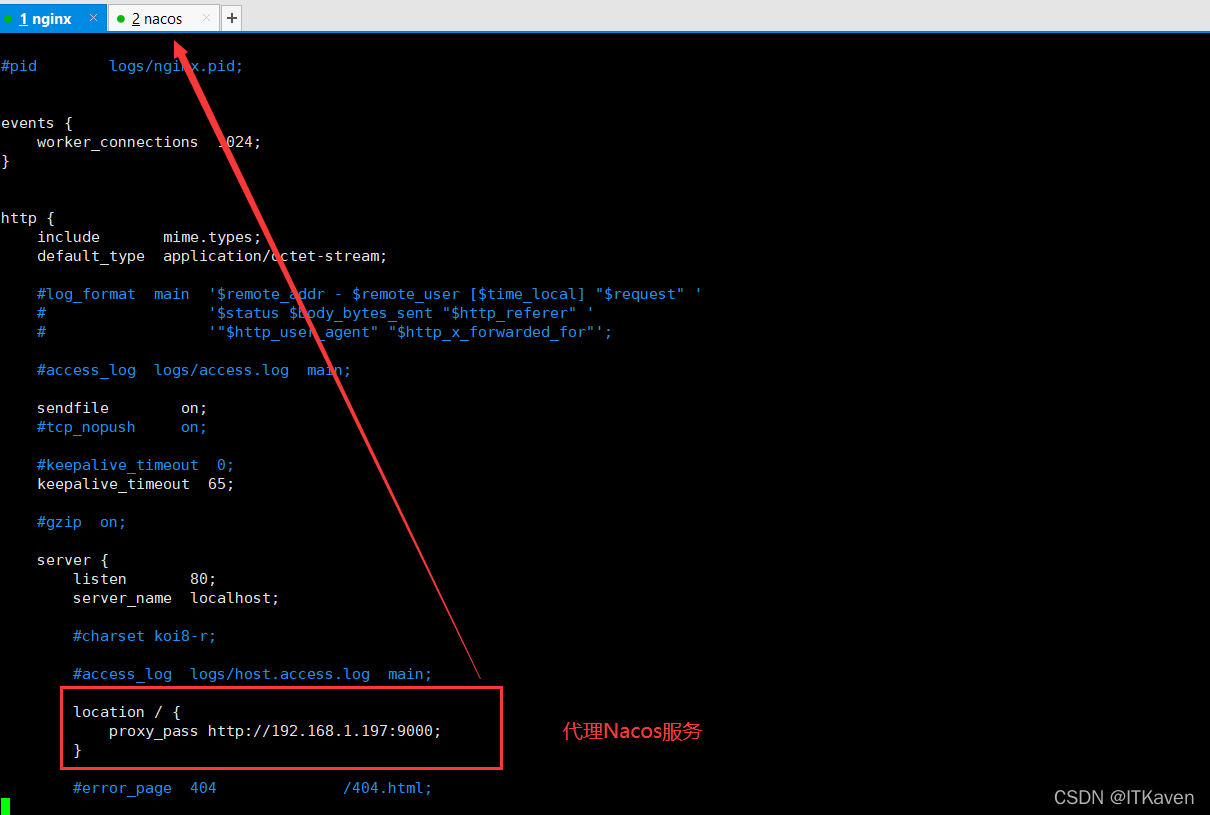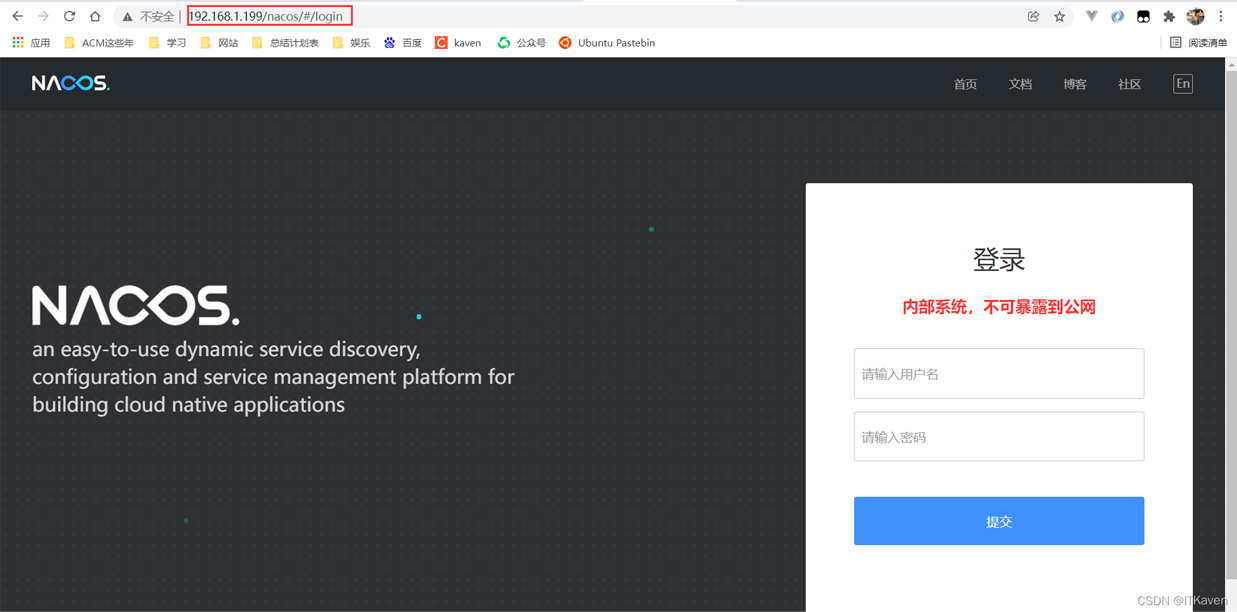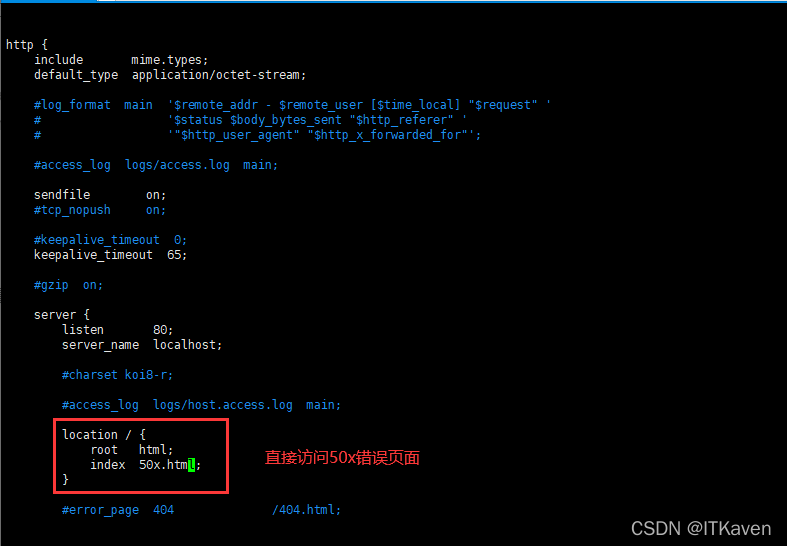您好,登錄后才能下訂單哦!
您好,登錄后才能下訂單哦!
小編給大家分享一下Nginx熱部署如何實現,相信大部分人都還不怎么了解,因此分享這篇文章給大家參考一下,希望大家閱讀完這篇文章后大有收獲,下面讓我們一起去了解一下吧!
關閉防火墻,讓本地可以通過瀏覽器訪問Nginx服務。
[root@localhost ~]# systemctl stop firewalld

查看信號量:
[root@localhost ~]# kill -l 1) SIGHUP 2) SIGINT 3) SIGQUIT 4) SIGILL 5) SIGTRAP 6) SIGABRT 7) SIGBUS 8) SIGFPE 9) SIGKILL 10) SIGUSR1 11) SIGSEGV 12) SIGUSR2 13) SIGPIPE 14) SIGALRM 15) SIGTERM 16) SIGSTKFLT 17) SIGCHLD 18) SIGCONT 19) SIGSTOP 20) SIGTSTP 21) SIGTTIN 22) SIGTTOU 23) SIGURG 24) SIGXCPU 25) SIGXFSZ 26) SIGVTALRM 27) SIGPROF 28) SIGWINCH 29) SIGIO 30) SIGPWR 31) SIGSYS 34) SIGRTMIN 35) SIGRTMIN+1 36) SIGRTMIN+2 37) SIGRTMIN+3 38) SIGRTMIN+4 39) SIGRTMIN+5 40) SIGRTMIN+6 41) SIGRTMIN+7 42) SIGRTMIN+8 43) SIGRTMIN+9 44) SIGRTMIN+10 45) SIGRTMIN+11 46) SIGRTMIN+12 47) SIGRTMIN+13 48) SIGRTMIN+14 49) SIGRTMIN+15 50) SIGRTMAX-14 51) SIGRTMAX-13 52) SIGRTMAX-12 53) SIGRTMAX-11 54) SIGRTMAX-10 55) SIGRTMAX-9 56) SIGRTMAX-8 57) SIGRTMAX-7 58) SIGRTMAX-6 59) SIGRTMAX-5 60) SIGRTMAX-4 61) SIGRTMAX-3 62) SIGRTMAX-2 63) SIGRTMAX-1 64) SIGRTMAX
有64種信號量,以下是幾種常用的信號量:
SIGINT 、SIGTERM:快速關閉。
SIGQUIT:從容關閉(優雅的關閉進程,即等請求結束后再關閉)。
SIGHUP:平滑重啟,重新加載配置文件 (平滑重啟,修改配置文件之后不用重啟服務器)。
SIGUSR1 :重新讀取日志文件,在切割日志文件時用途較大。
SIGUSR2:平滑升級可執行程序 ,nginx升級時候用。
SIGWINCH :從容關閉工作進程。
Nginx是一個多進程的高性能反向代理服務器,包含一個master進程和多個worker進程(worker進程的數量可以通過nginx.conf配置文件中的worker_processes參數進行設置,默認1個),這樣可以充分利用多核處理器。

默認1個worker進程。

并且master進程和worker進程是父子進程關系。

Nginx工作模式為多進程,Nginx在啟動之后會有一個master進程和多個worker進程(默認1個),多個worker子進程將監聽master父進程監聽的端口(參考父子進程的關系),并行處理請求。master父進程主要用來管理worker子進程(管理真正提供服務的worker進程,向worker進程發送信號,監控worker進程的運行狀態,當worker進程異常退出后,會重新啟動新的worker進程),讀取并驗證配置信息,master進程不會對用戶請求提供服務,而用戶請求是由worker進程進行處理。
Nginx是通過信號量來控制,比如停止和重啟Nginx。信號量是進程間通信的一種機制,master主進程控制多個worker子進程,也是通過信號量。

現在來演示Nginx是怎么實現熱部署的,博主通過修改Nginx的配置文件來模擬Nginx的升級(先copy一份副本)。
[root@localhost ~]# cd /usr/local/nginx/conf/ [root@localhost conf]# ll 總用量 68 -rw-r--r--. 1 root root 1077 12月 20 20:24 fastcgi.conf -rw-r--r--. 1 root root 1077 12月 20 20:24 fastcgi.conf.default -rw-r--r--. 1 root root 1007 12月 20 20:24 fastcgi_params -rw-r--r--. 1 root root 1007 12月 20 20:24 fastcgi_params.default -rw-r--r--. 1 root root 2837 12月 20 20:24 koi-utf -rw-r--r--. 1 root root 2223 12月 20 20:24 koi-win -rw-r--r--. 1 root root 5231 12月 20 20:24 mime.types -rw-r--r--. 1 root root 5231 12月 20 20:24 mime.types.default -rw-r--r--. 1 root root 2656 12月 20 21:26 nginx.conf -rw-r--r--. 1 root root 2656 12月 20 20:24 nginx.conf.default -rw-r--r--. 1 root root 636 12月 20 20:24 scgi_params -rw-r--r--. 1 root root 636 12月 20 20:24 scgi_params.default -rw-r--r--. 1 root root 664 12月 20 20:24 uwsgi_params -rw-r--r--. 1 root root 664 12月 20 20:24 uwsgi_params.default -rw-r--r--. 1 root root 3610 12月 20 20:24 win-utf [root@localhost conf]# cp nginx.conf nginx_old.conf [root@localhost conf]# vim nginx.conf

由于還沒有給Nginx進行熱部署,現在訪問http://192.168.1.199/還是原來的Nginx頁面。

查看Nginx的進程:
[root@localhost conf]# ps -ef | grep nginx root 14964 1 0 22:25 ? 00:00:00 nginx: master process ./nginx nobody 14965 14964 0 22:25 ? 00:00:00 nginx: worker process root 15016 1521 0 23:07 pts/0 00:00:00 grep --color=auto nginx
給master進程發送SIGUSR2信號,讓Nginx平滑升級可執行程序。可以看到Nginx重新啟動了一組master進程和worker進程,而新master進程是舊master進程的子進程(通過父子進程的繼承關系,新master進程可以很方便地繼承舊master進程的相關資源)。
[root@localhost conf]# kill -s SIGUSR2 14964 [root@localhost conf]# ps -ef | grep nginx root 14964 1 0 22:25 ? 00:00:00 nginx: master process ./nginx nobody 14965 14964 0 22:25 ? 00:00:00 nginx: worker process root 15019 14964 0 23:18 ? 00:00:00 nginx: master process ./nginx nobody 15020 15019 0 23:18 ? 00:00:00 nginx: worker process root 15022 1521 0 23:19 pts/0 00:00:00 grep --color=auto nginx
并且Nginx在日志目錄中存儲了新舊pid文件(保存了新舊master進程的ID)。
[root@localhost conf]# ll ../logs 總用量 16 -rw-r--r--. 1 root root 2729 12月 20 23:20 access.log -rw-r--r--. 1 root root 708 12月 20 23:18 error.log -rw-r--r--. 1 root root 6 12月 20 23:18 nginx.pid -rw-r--r--. 1 root root 6 12月 20 22:25 nginx.pid.oldbin [root@localhost conf]# cat ../logs/nginx.pid 15019 [root@localhost conf]# cat ../logs/nginx.pid.oldbin 14964
給舊master進程發送SIGWINCH信號,讓舊master進程關閉舊worker進程。
[root@localhost conf]# kill -s SIGWINCH 14964 [root@localhost conf]# ps -ef | grep nginx root 14964 1 0 22:25 ? 00:00:00 nginx: master process ./nginx root 15019 14964 0 23:18 ? 00:00:00 nginx: master process ./nginx nobody 15020 15019 0 23:18 ? 00:00:00 nginx: worker process root 15030 1521 0 23:27 pts/0 00:00:00 grep --color=auto nginx
現在訪問http://192.168.1.199/,會響應404。

而訪問http://192.168.1.199/nacos,會訪問到Nacos服務。

如果升級版本沒有問題,就可以給舊master進程發送SIGQUIT信號,讓舊master進程關閉,這樣就只剩下新master進程和新worker進程,實現了Nginx的熱部署。
[root@localhost conf]# kill -s SIGQUIT 14964 [root@localhost conf]# ps -ef | grep nginx root 15019 1 0 23:18 ? 00:00:00 nginx: master process ./nginx nobody 15020 15019 0 23:18 ? 00:00:00 nginx: worker process root 15034 1521 0 23:31 pts/0 00:00:00 grep --color=auto nginx
如果升級版本有問題,需要回滾到之前的版本,就可以給舊master進程發送SIGHUP信號,因為博主重新進行了測試,所以進程號都變了,但很顯然舊master進程重新創建了舊worker進程,并且進行版本升級的master和worker進程沒有被關閉。
[root@localhost conf]# kill -s SIGHUP 15084 [root@localhost conf]# ps -ef | grep nginx root 15084 1 0 12月20 ? 00:00:00 nginx: master process ./nginx root 15106 15084 0 12月20 ? 00:00:00 nginx: master process ./nginx nobody 15107 15106 0 12月20 ? 00:00:00 nginx: worker process nobody 15131 15084 0 00:02 ? 00:00:00 nginx: worker process root 15141 1521 0 00:09 pts/0 00:00:00 grep --color=auto nginx
給新master進程發送SIGQUIT信號,讓新master進程關閉,這樣就只剩下舊master進程和新創建的舊worker進程,實現了回滾。
[root@localhost conf]# kill -s SIGQUIT 15106 [root@localhost conf]# ps -ef | grep nginx root 15084 1 0 12月20 ? 00:00:00 nginx: master process ./nginx nobody 15131 15084 0 00:02 ? 00:00:00 nginx: worker process root 15159 1521 0 00:25 pts/0 00:00:00 grep --color=auto nginx
回滾成功。

還需要對版本回滾(即博主這里的配置文件回滾,不然下次重啟就會出問題)。
[root@localhost conf]# cp -f nginx_old.conf nginx.conf cp:是否覆蓋"nginx.conf"? y
為什么給舊master進程發送SIGHUP信號,舊master進程重新創建的worker進程沒有重新讀取配置文件?下面是官方的說明:
Send the HUP signal to the old master process. The old master process will start new worker processes without re-reading the configuration. After that, all new processes can be shut down gracefully, by sending the QUIT signal to the new master process.
向舊
master進程發送SIGHUP信號。舊master進程將啟動新worker進程,而無需重新讀取配置。之后,通過向新master進程發送SIGQUIT信號,所有新進程都可以正常關閉。
如果不存在新進程的情況下(只有一組master、worker進程),修改配置文件,再向master進程發送SIGHUP信號,看是否會重新加載配置文件。

[root@localhost conf]# kill -s SIGHUP 15084
很顯然配置文件被重新加載了,由于博主還沒有看源碼,只能猜測Nginx的實現(如果說錯了,請大家評論補充),Nginx應該是根據當前是否在進行熱部署(存在新master進程),來決定SIGHUP信號是否需要重新加載配置文件。

以上是“Nginx熱部署如何實現”這篇文章的所有內容,感謝各位的閱讀!相信大家都有了一定的了解,希望分享的內容對大家有所幫助,如果還想學習更多知識,歡迎關注億速云行業資訊頻道!
免責聲明:本站發布的內容(圖片、視頻和文字)以原創、轉載和分享為主,文章觀點不代表本網站立場,如果涉及侵權請聯系站長郵箱:is@yisu.com進行舉報,并提供相關證據,一經查實,將立刻刪除涉嫌侵權內容。